MAKING MOBILITY SAFE, SUSTAINABLE AND ACCESSIBLE
BY SCALING EXISTING ADAS/AD SYSTEMS AND INVENTING NEW ONES
Sophisticated regulation, high diversity of features, increasing development speed and shortage of talent — various challenges will stress players throughout the mobility sector while deploying ADAS/AD systems in the upcoming years.

Managing the complexity of ADAS/AD systems
ADAS/AD features can’t be handled as isolated units. They will not only interact with all vehicle domains — such as steering, braking, powertrain or infotainment — but also with an intelligent infrastructure and digital maps.
We support our customers to manage this complexity. Together with a worldwide leading OEM, we established our scenario based systems engineering approach which allows us to capture and map the complexity of the systems holistically. In a joint project for the development of a Level 3 highway pilot, we were able to avoid unplanned and usually costly design changes in late project phases. We also support heavy duty customers working to deploy Level 4 systems.

Increased safety and optimum comfort through large-scale integration of L1-L2 ADAS FEatures
To meet NCAP and GSR regulations in 2025, all vehicles must be equipped with active safety systems. To enable this, lean development approaches, cost-effective and safe sensors, and uniform control platforms will be key factors.
In a turnkey series development project with a major commercial vehicle manufacturer, we developed best-in-class L2 functions, including adaptive cruise control or automatic emergency braking. We achieved optimal efficiency by leveraging a global team for system design, function development, validation and testing within an agile cooperation scheme.
An addition to development efforts, our comprehensive benchmarking program plays an important role within our effective and innovative approach. Benchmarking allows us to maintain a comprehensive knowledge base for sensor performance, including lidar, which can be utilized to save time and cost during projects.

This might also interest you
ADAS/AD benchmarking studies about Tesla’s Model 3 and the functionality of the new VW ID.3
Accelerate validation of L3-L5 features
Level 3 systems have been announced by several OEMs, but releases have been repeatedly postponed, or announcements withdrawn. Specific scenario space definition is a key reason for these challenges. It is not feasible or cost effective to validate autonomous functions solely on-road. Therefore, virtualization plays a critical role in system validation. High-quality scenario data is essential.

Through intelligent data management in combination with our scenario-based systems engineering approach, we ensure that scenario data recorded by vehicles is of sufficient quality among the different validation stages for an autonomous driving system.
Currently, we are working together with a market-leading car manufacturer on a system that enables the qualitative assessment of scenario data. In addition to the setup of requirements, we established a performance catalogue for different data sources. Furthermore, we defined standards for automated data transfer from these sources to the cloud. Our work enables our customer to select the most appropriate data sources in the context of the overall strategy, while ensuring maximum quality and effective cost control.
Interested in working with us?

Proven experience in prototype and series programs
We have mastered feature & function development & testing projects for truck and passenger cars.

Field-tested methodical framework
We provide structured system specification and validation according to safety and security regulations.

Comprehensive Training and Consulting approach
We empower organizations to become experts in all domains connected to intelligent mobility.

End-to-end understanding
We work along the whole process — from vision to SOP

Collaborative
We bring experts from all relevant fields to the table and create a language that everyone understands.

Johannes Richenhagen
Managing Director
